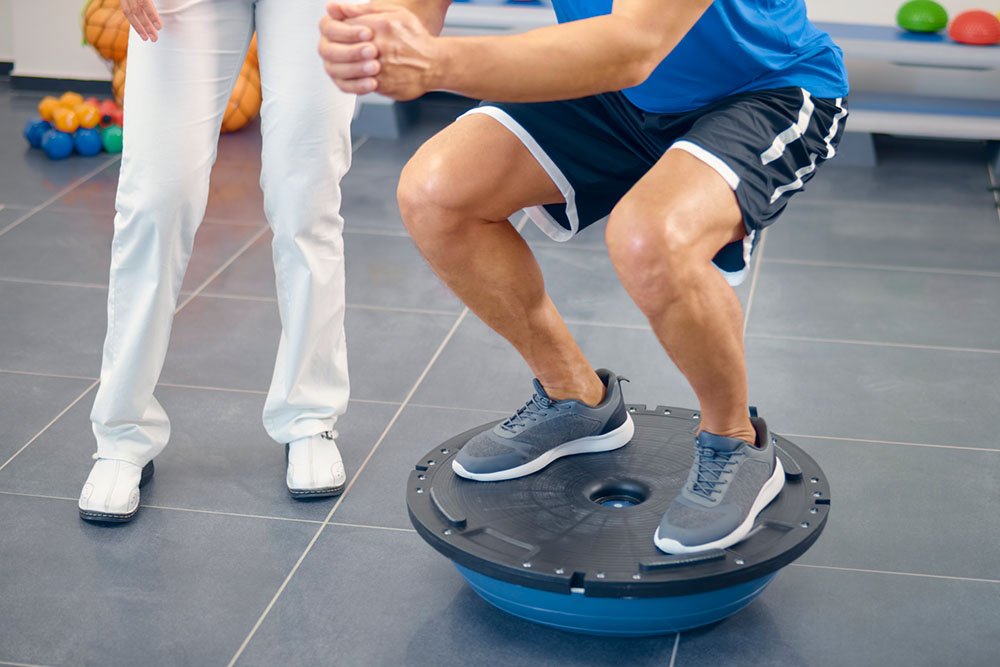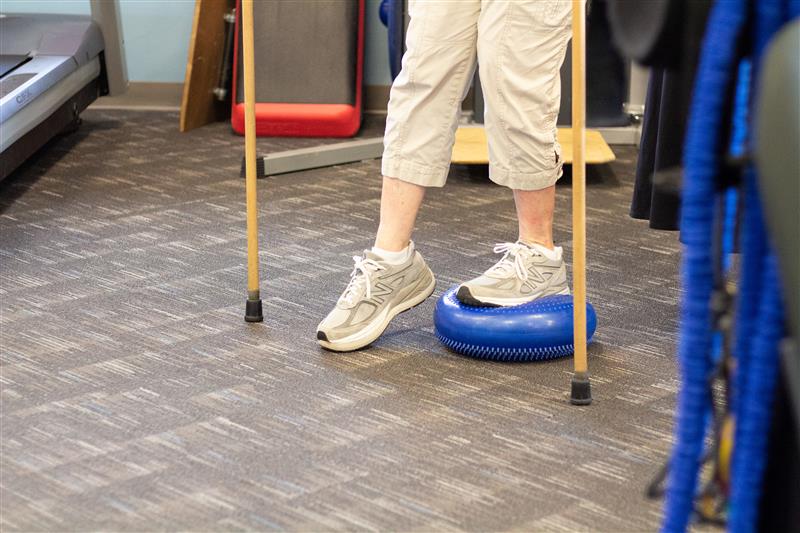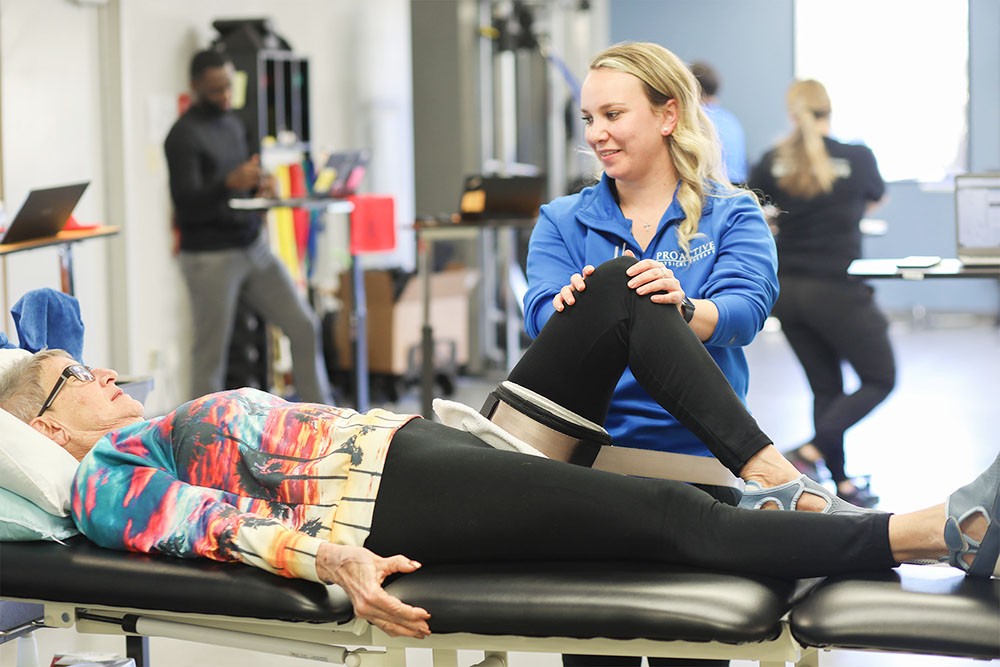Ankle injuries are one of the most common sports injuries. They occur when too much stress is placed on your ankle joint, causing it to tear or sprain. Ankle sprains can happen in all kinds of situations, from playing basketball to simply tripping over a crack in the sidewalk. The most common type of ankle injury occurs when an outside force causes your foot and ankle to twist inward or outward beyond their normal range of motion resulting in ligament tears or other damage that may require surgery.
In this article, we’ll discuss what causes ankle injuries, who is most likely to get them, and how to protect yourself by strengthening muscles around your ankles (and feet).
How Does an Ankle Injury Occur?
Ankle injuries can occur when the foot rolls inward, outward, or a combination of movements. These injuries can happen if your foot suddenly lands on an uneven surface while running or changing direction. An ankle sprain may also occur from landing awkwardly from a jump during a game or practice.
The first signs of an ankle sprain are pain and swelling. If the ankle injury isn’t treated correctly, you may risk developing arthritis or tearing the ligaments completely.
If you think you have an ankle sprain, get medical treatment immediately. Your doctor will evaluate your injury and recommend the best course based on its severity. If you cannot see your doctor or want to speed the process up, seek help from a physical therapist using direct access.
Types of Ankle Sprain
There are several types of ankle sprains. A high ankle sprain involves a tear or damage to the ligaments between the tibia and fibula (syndesmosis). This is done by combining dorsiflexion and rotation (foot bending toward the shin. An inversion ankle sprain involves damage to the ligaments on the lateral (outer) side of the ankle when the medial border of the foot rises and the forefoot rolls inward. An eversion sprain is the opposite motion and happens when the lateral edge of your foot raises and the forefoot moves outward, causing damage to the ligaments on the inside of your ankle.
Sprains can be categorized as mild (grade 1), moderate (grade 2), or severe (grade 3), depending on the damage occurring to the ligament during the injury.
Signs and Symptoms of Ankle Sprain
Several symptoms can indicate the injury’s extent if you’ve suffered an ankle sprain. These include:
- Pain in your ankle when walking on it
- Tenderness and swelling around your joint
- Inability to put weight on your foot without pain occurring or feeling like something is holding you back
- Tingling or numbness in your foot
- Pain that radiates up into your leg and knee
- Difficulty putting on shoes or socks due to pain
- An inability to move your ankle without feeling pain
- Cracking or popping sounds when you move your foot
Treatment of Ankle Injuries
The treatment of ankle injuries depends on the severity of the damage. If you suspect that you may have injured your ankle, consult a healthcare professional immediately so that they can examine and assess your injury. If necessary, they will direct you to physical therapy for further evaluation and treatment.
In most cases, you can treat mild ankle sprains at home with protection, rest, ice, compression, and elevation. An athletic brace or taping of the joint can be used if it feels too weak to support weight on its own. Once healed, start strengthening exercises as soon as possible so that you don’t fall victim to another ankle sprain in the future!
Ankle Strengthening Exercises for Injury Prevention
It’s essential to strengthen your ankles and provide them with more stability if you want to prevent injuries. Strengthening exercises that flex the foot upward and downward, as well as in and out, will help you avoid common ankle injuries.
Ankle strengthening exercises can also help improve balance and stability while walking or running on uneven surfaces. Some of the ankle exercises that can help strengthen your ankles include:
Lateral Side Steps
- Stand with feet shoulder-width apart, knees slightly bent, then raise one foot off the floor and take a step laterally (to the side). Keep hips facing forward; do not rotate them during this exercise.
- Perform 5-10 steps laterally before reversing direction to return to the original starting location. Keep the neutral alignment of your ankles to avoid rolling inward or outward as you take steps. If you struggle with balance, perform at a countertop and use your hands as needed for extra stability.
- Perform three sets of 10 repetitions daily for the best results.
Dorsiflexion and Plantarflexion
- Sit on the floor with your legs outstretched.
- While keeping your heels on the ground, point your foot/toes away from you (plantar flexion), like stepping on a gas pedal. Avoid curling or bending your toes as you do this. Repeat ten times for each foot.
- Now point your foot/toes toward you like you are bringing them toward your nose(dorsiflexion). Repeat ten times for each foot.
Inversion and Eversion Exercises
Sit in a chair with your knees bent and feet flat on the floor. Without rotating your hips or knees, point your foot/toes outward and hold for five seconds before pointing your foot/toe inward. Think of a windshield wiper when performing this motion. Repeat three sets of 10 repetitions for each foot.
Heel Raises
- Stand with your feet shoulder-width apart.
- Lift both heels off the ground, keeping your knee straight and heel lifted as high as possible. Hold for a count of three before lowering it back to the floor. Do three sets of 10 repetitions.
One-legged balance exercises
One-legged balance exercises can help strengthen the muscles around your ankles and provide added stability. Some examples are:
- Stand on a wobble board or cushion and keep your knee slightly bent as you hold for 30-60 seconds. Repeat three sets two times daily.
- Stand on one leg while lifting the opposite leg to tap a cone or target 6-10 inches off the ground. Complete 8-10 taps with each foot for a total of three sets two times daily.
Find A ProActive Physical Therapist
Strengthening the muscles that support your ankle joint can help prevent an injury. Ankle strength is essential for the stability of your whole body. When you strengthen your ankles, it’s vital to do so in a way that allows your body to safely and effectively adapt. The best way to do this is by starting with easy exercises that don’t stress your joints or muscles and gradually increasing the intensity as you get stronger. In addition to ankle strength, you should also focus on ankle mobility. Contact ProActive Physical Therapy for more information about how we can help improve your ankle strength and mobility.







